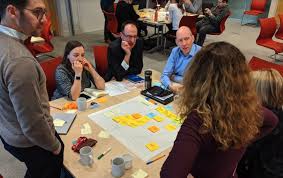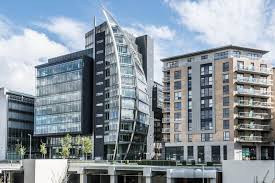Module Title : Design Principles and Practice
Module Code: 5CN007
Component Number: 1 of 2
Weighting: Assessment 1: 50% of Module weighting
Assignment : The Structural basis of Architecture – an appraisal
Learning Outcomes to be assessed:
5CN007 Design Principles And Practice Assessment 2 – Wolverhampton University UK.
Intellectual Abilities :-
• Overview – Analytical appreciation of structural design
• Develop and extend knowledge of structures and buildings
• Evaluate a specific structure or building
• Synthisis findings with reference to spatial and structural elements
• Synthesise data, critically reflect upon a scenario/case study
Submission Criteria:
To be bound in a report format with a introduction and conclusion. Annotated drawings and photographs can be used to support the evaluation.Word count excluding, annotation, references and bibliographies – approximately 2,750 words The minimum pass mark for this component is 40%
Assignments submitted after the deadline and without an authorised extension of time will be marked 0%
You should make it very clear what sources of information have been used; where material/information from these sources is quoted it must be clearly referenced using the Harvard Referencing System. (Details can be obtained from Learning Centres).
The assignment must be handed in to this Canvas Topic under ‘Assignments’.
You are advised to keep your own electronic and ‘hard’ copy of any work in progress and submitted.
Introduction :
Space generators, mechanical objects or both?
While it is easy to imagine structures without architecture, there can be no architecture without structures. Examples of the former include tower cranes used on construction projects, electrical pylons and wind turbines – structures whose sole purpose is to keep loads lifted off the ground.
In architecture, the design of a building commonly includes roofs, floors and walls whose weight must be borne and balanced with the help of structures. But beyond that, these elements are typically influenced by requirements and conceptual ideas for the interior spaces and exterior forms.
However, the specific relationship between architecture and structure, whereby the one encompasses the other, may vary greatly from one building or structure to another, even when built during a similar period of time.
Today, we are likely to come across buildings whose structures are of very little interest architecturally as well as others that display a particularly close correlation between architectural form and structural function.
Structures play a role as a provider of the necessary stiffness and strength (which are the basic mechanical prerequists for carrying loads safely) and as an instrument for creating spaces that embody other qualities. In other words structures can range from those conceived as pure force systems that follow a logic of maximum strength for the minimum of materials (structural efficiency) to those designed to additionally act as iconic visual images – put simply, they look interesting…
5CN007 Design Principles And Practice Assessment 2 – Wolverhampton University UK.
Would you believe that this is a building structure? It’s conceptual and called the ‘Cybertecture Egg’.
Some shapes and forms are just too good to be true (and weird!).
We can come across captivating designs that becomes the talk of the town and its not even over while another pops up surpassing the previous in its elegance and maturity.
This ‘Egg’ is planned for Mumbai city by James Law Cybertecture International with Vijay Associates. The 32,000 sq m egg-shaped building will combine “iconic architecture, environmental design, intelligent systems, and new engineering to create an awe-inspiring landmark in the city.”
The aim is to provide a customisable environment that enhances the experience of working. Complementing its appearance, it will also include advanced interactive technologies to be used by the inhabitants.
Brief:
With the concept of ‘Form and Function’ in mind, you are to undertake an appraisal of a specific structure or building (the case study).
This is to be a physical investigation and not just a desk-top study of existing published work.
Consider the following; these guidelines will assist you in completing your report:
1.Introduction to the report and it’s purpose.
2.Contextualise the Case Study by providing location information.
3.Do the topography and ground conditions influence the design and type of structure used?
4.Whilst no costings are required; could finances have influenced the design and material use?
5.Consider initially the PURPOSE of your chosen structure, for example a Supermarket has to display goods for sale. Efficient and pleasing access to these goods, payment and egress is important.This will influence the spatial and structural design criteria for the building and the land within its curtilage, such as delivery routes and parking.
6.Identify the different Loads that the structure must withstand and describe how the structure is designed to resist them. Do not forget wind loads.
7.Discuss how you perceive the design of the structure has been concieved to accommodate the loadings identified above. For example a Supermarket will require clear open spaces; how, therefore, what structural elements has been employed to support the roof?
8.Evaluate the importance of it’s structure and its form – which do you think has been the rationale for your case study. Has the case study changed from it’s original use?
9.Provide drawings and your own photographs of your structure to support your findings. Include external elevations and where permissible, internal details. You may use CAD to support your work if you wish.
Indicative Marking Scheme :
The word count for your report is 2,750 words excluding appendices, references and annotation. The word count should be stated before your introduction – an allowance of 10% (+ or –) will be permitted.
Remember :
Some students undertaking 5CN007 Design Principles and Practice may be drawn from Awards that do not include Structural Design or Civil Engineering within their programmes.
Nevertheless, from a viewpoint where all disciplines need to have an UNDERSTANDING of the impact of design upon their own specialism, this module has been developed to take away the mystery and fear of structures.
It is not intended to turn you into a Structural Engineer!
5CN007 Design Principles And Practice Assessment 2 – Wolverhampton University UK.
Before you start:
i. Do ask permission of the owner/occupier before starting your assignment.
ii. Do not attempt to seek access or take photographs in any restricted or sentive areas.
iii. Do not ask emplyees or Local Authorities for information about your case study.
iv. Consider your own safety; do not climb on your case study.
NOTE: Covid-19 restrictions at the time may mean that this assessment may have to be based upon on-line research only/
On site:
The following items will be of use – subject to Covid-19 restriictions on site visits.
1. Clip Board, cover and A4 note paper
2. Pencils – pens don’t work very well in the rain!
3. Binolculars
4. Camera
Ask yourself these questions:
1. How old is it and what is it’s significance?
2. What are the design considerations for the structure
3. What are the spatial requirements
4. Has it been converted from its original use – why has it changed?
5. Has it been extended – if so why – would this have any structural implications?
6. What is the construction of external envelope and why was it selected
7. What will the building/structure be used for
8. How would it have been constructed – the sequence
9. Internal features and finishes – requirement and selection
10. External features, including the site
11. Location – why is the structure where it is? How does it inter-relate to it’s surroundings?
12. Does the structure influence the type of maintenance regime
13. Services – Gas, Water, Electricity, Telephones, IT, Drainage, Heating, Air Conditioning,Lighting, Alarms – do these impact on the structure or design – are they retro-fit?
5CN007 Design Principles And Practice Assessment 2 – Wolverhampton University UK.
Importantly you need to consider the use of the case study now (and how it differs from when it was originally constructed) and how it performs.
What can I choose for my case study?
The choice of case study is yours, they can be in Wolverhampton, near your home, anywhere providing you have non-tress passing access to them. However, your choice must be agreed by myself in week 2.






